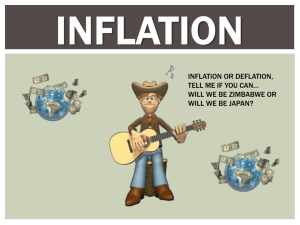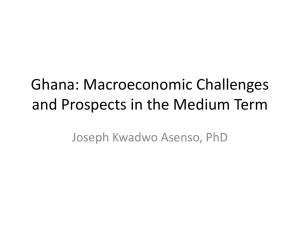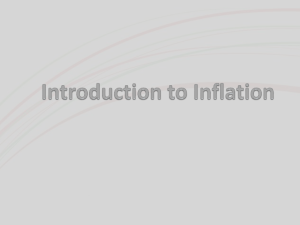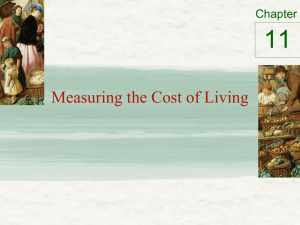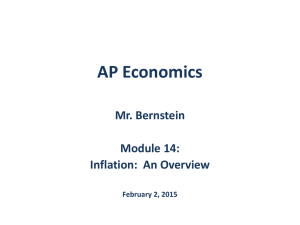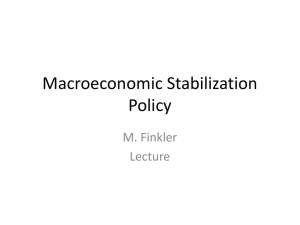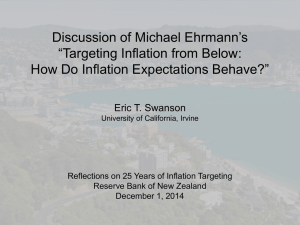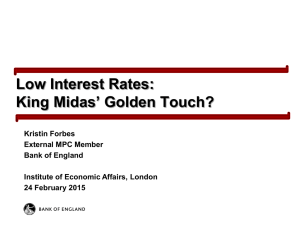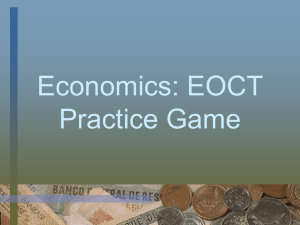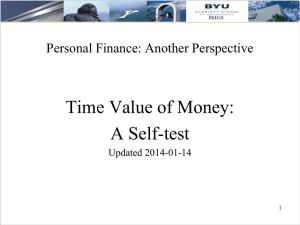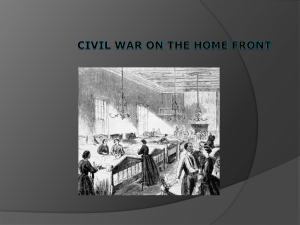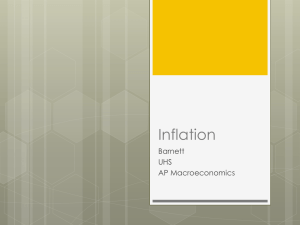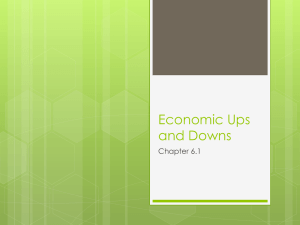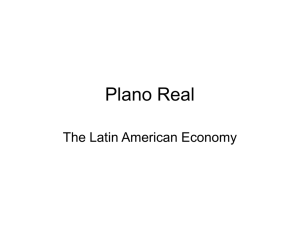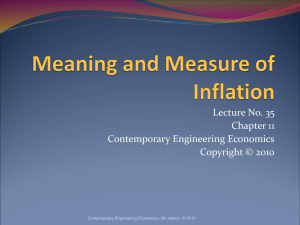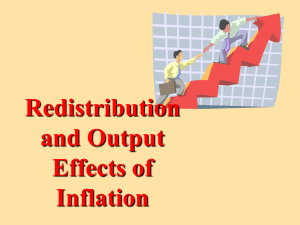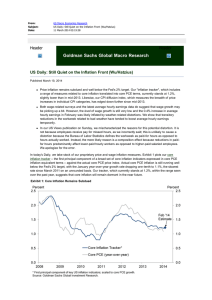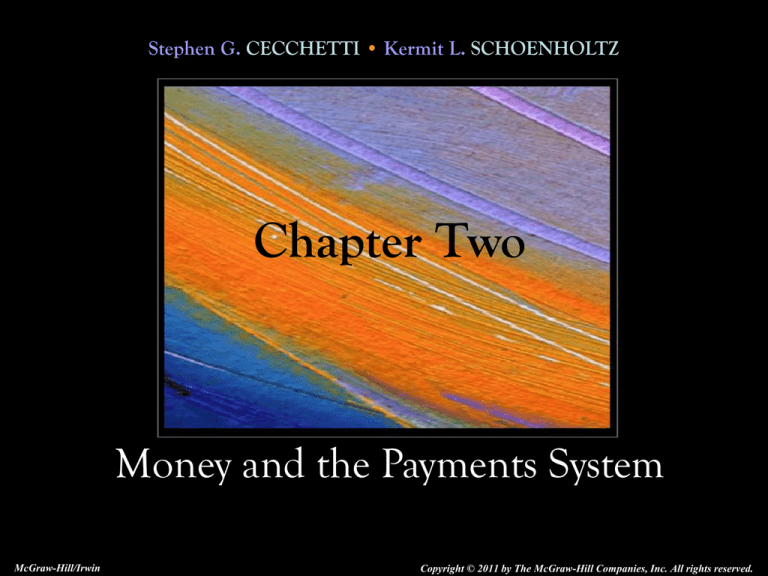
Stephen G. CECCHETTI • Kermit L. SCHOENHOLTZ
Chapter Two
Money and the Payments System
McGraw-Hill/Irwin
Copyright © 2011 by The McGraw-Hill Companies, Inc. All rights reserved.
Goals of the Chapter
• To understand what money is.
• To understand how we use money.
• To understand how we measure money.
2-2
• Term used by Adam Smith to describe the natural force
that guides free market capitalism through competition
for scarce resources. According to Adam Smith, in a
free market each participant will try to maximize selfinterest, and the interaction of market participants,
leading to exchange of goods and services, enables
each participant to be better of than when simply
producing for himself/herself. He further said that in a
free market, no regulation of any type would be needed
to ensure that the mutually beneficial exchange of
goods and services took place, since this "invisible
hand" would guide market participants to trade in the
most mutually beneficial manner.
23
Adam Smith: Invisible Hand
Meaning & Function of Money
Economist’s Meaning of Money
1. Anything that is generally accepted in payment for
goods and services
2. Not the same as wealth or income
Functions of Money
1. Medium of exchange
2. Unit of account
3. Store of value
Evolution of Payments System
1. Precious metals like gold and silver
2. Paper currency (fiat money)
3. Checks
4. Electronic means of payment
5. Electronic money: Debit cards, Stored-value cards,
Smart cards, E-cash
Money and How We Use It
• Money is an asset that is generally accepted as
payment for goods and services or repayment
of debt.
• Income is a flow of earnings over time, where
wealth is the value of assets minus liabilities.
2-5
Money and How We Use It
Money has three characteristics:
1. It is a means of payment
2. It is a unit of account, and
3. It is a store of value.
The first of these characteristics is the most
important
2-6
Money and How We Use It
1. It is a means of payment
• People insist on payment in money.
•
•
Barter requires a “double coincidence of wants”.
Money is easier and finalizes payments so no
further claim on buyers and sellers.
2-7
Money and How We Use It
2. It is a unit of account.
• Money is used to quote prices and record
debts - it is a standard of value.
• Prices provide the information needed to
ensure resources are allocated to their best
uses.
• Using dollars makes relative price
comparisons easier.
2-8
Money and How We Use It
3. It is a store of value
• A means of payment has to be durable and
capable of transferring purchasing power
from one day to the next.
• Paper currency does degrade, but is accepted
at face value in transactions.
• Other forms of wealth are also a store of
value: stocks, bonds, houses, etc.
2-9
The Payments System
• The payments system is a web of arrangements
that allow for the exchange of goods and
services, as well as assets.
• It is critical this functions well.
• Money is at the heart of the payments system.
2-10
Commodity and Fiat Monies
• Gold coins and notes, backed by gold, were
used into the 20th century.
• Today’s paper money is called fiat money,
because its value comes from government
decree, or fiat.
• We are willing to accept these bills as payment
because the US government stands behind its
paper money.
• In the end, money is about trust.
2-11
• Money is used as a medium of exchange, in final
settlement of a debt, and as a ready store of value. Its
different functions are associated with different
empirical measures of the money supply.
• There is no single "correct" measure of the money
supply: instead, there are several measures, classified
along a spectrum or continuum between narrow and
broad monetary aggregates.
• Narrow measures include only the most liquid assets,
the ones most easily used to spend (currency,
checkable deposits). Broader measures add less liquid
types of assets (certificates of deposit, etc.)
21
• This continuum corresponds to the way that different types
of money are more or less controlled by monetary policy.
• Narrow measures include those more directly affected and
controlled by monetary policy, whereas broader measures
are less closely related to monetary-policy actions.
• The different types of money are typically classified as
"M"s. The "M"s usually range from M0 (narrowest) to
M3 (broadest) but which "M"s are actually used depends
on the country's central bank.
• http://en.wikipedia.org/wiki/Money_supply
21
Checks
• A check is an instruction to the bank to take
funds from your account and transfer them to
another account.
• A check is therefore not a final payment as currency
is.
• A check sets in motion a series of transactions
as seen in Figure 2.1.
2-14
Figure 2.1: The Path of a Paper
Check
2-15
Measuring Money
• Changes in the quantity of money are related to
• Interest Rates
• Economic Growth
• Inflation
2-16
Measuring Money
• Inflation:
• The process of prices rising.
• Inflation rate:
• The measurement of the process.
• With inflation, you need more money to buy
the same basket of goods.
• The primary cause of inflation is too much
money.
2-17
Measuring Money
• The value of the means of payment depends on
how much of it is circulating.
• We therefore must be able to measure how much is
circulating.
• Defining money means defining liquidity (see
figure 2.2).
2-18
Figure 2.2 - The Liquidity
Spectrum
2-19
Measuring Money
Different definitions of money are based upon degree of
liquidity.
Drawing the line in different places has led to several
measure of money called the money aggregates: M1
and M2.
M1: Narrowest definition.
Only the most liquid assets.
M2: Broader definition.
Includes assets not used as means of payment.
2-20
Table 2.1: The Monetary
Aggregates
2-21
Measuring Money
• What do the money aggregates mean?
• As of winter 2010, nominal US gross domestic
product (GDP) was $14,500 billion.
• Using the data in Table 2.1 above:
• GDP is nearly nine times as large as M1.
• GDP is about 70 percent larger than M2.
2-22
Measuring Money
• Which M do we use to understand inflation?
• Until the early 1980’s we used M1.
• But with changes in accounts, M2 became more
useful.
• M2 represents nearly one-half of GDP, so M1 is no
longer a useful measure of money.
• Figure 2.3 shows the M’s growth rates.
2-23
M2 Graph
22
Figure 2.3: Growth Rates of the
Money Aggregates
2-25
Measuring Money
• How useful is M2 in tracking inflation?
• When the quantity of money grows quickly, it
produces high inflation.
• Figure 2.4 shows the inflation rate versus M2 two
years earlier for the US.
• Positive correlation up until 1980.
• From 1990-2000 - no correlation.
• Growth in M2 stopped being a useful tool for
forecasting inflation.
2-26
Figure 2.4: Money Growth and
Inflation
2-27
Money Growth and Inflation
• When inflation is high, money growth helps
forecast inflation (from 1960 to 1980).
• When inflation is low, the relationship is not as
close (from 1990 to 2006).
22
Measuring Money
• Why does M2 no longer predict inflation?
• Maybe the relationship only applies at high levels
of inflation.
• Maybe it only shows up over longer periods of
time.
• Maybe we need a new measure of money.
• We do know that at low levels of money
growth, inflation is likely to stay low.
2-29
• The CPI answers the question:
“How much more would it cost for people to purchase
today the same basket of goods and services that they
actually bought at some fixed time in the past?”
2-30
• Computing CPI Inflation
• Survey people to see what they bought.
• Figure out what it would cost to buy the same
basket of goods & service today.
• Compute the percentage change in the cost of the
basket of goods.
CPI
Cost of Basket in Current Year
* 100
Cost of Basket in Base Year
2-31
Table 2.2: Computing the
Consumer Price Index
CPI2011 CPI 2010
Inflation Rate 2011
*100
CPI 2010
2-32
• In 2009 the public held about $880 billion in
US currency.
• You can compare this to each person holding
$2800.
• 80% of this money was in $100 bills.
• Many of these bills are in other countries.
• People in other countries hold other currencies
that are more stable than their own.
2-33
• In 2007 there was $2500 of U.S. currency in
circulation for each U.S. resident.
• As much as 2/3rds of this is abroad
23




